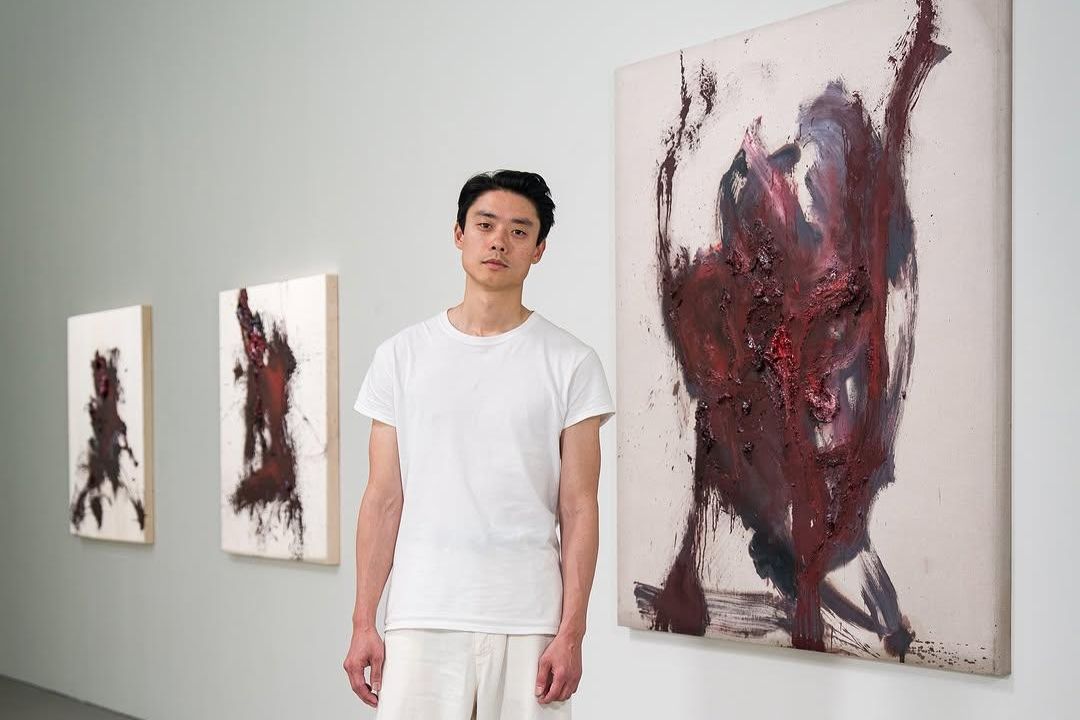Born in Seoul in December 1986, Henrik Uldalen was adopted by a Norwegian couple when he was just a few months old. He grew up in Asker, a small town outside Oslo, with what he describes as a “loving family” of parents and two siblings as well as friends.
A quiet child, he found refuge in drawing and once imagined becoming an art teacher. Instead, he became an artist and settled in London about a decade ago.
For most of his life, he focused on blending into the communities around him.
“I spent the majority of my life up until last year actively avoiding conversations about adoption,” he recalled in an interview with The Korea Times on Nov. 12. “I shut down any attempt from my parents to talk about Korea and learn more about my life there.”
Uldalen just “wanted to be a ‘normal’ Norwegian.”
“But over the years, it became clear that many things in my life directly correlated with refusing my true self — a lack of belonging anywhere, rootlessness, and biological and physical differences from Norwegians and most Westerners.”
That changed last year, when Whitestone Gallery Seoul invited him to hold a solo exhibition. That exhibition, “Lost/Found,” was held this year from Aug. 30 to Oct. 19 and featured around 30 works.

Artist Henrik Uldalen stands in front of one of his paintings at Whitestone Gallery Seoul during his solo show. Courtesy of Whitestone Gallery Seoul
Identity issues at center of his works
“The exhibition was a raw and honest account of emotions around betrayal, abandonment and identity, but also acceptance and love. In order to find myself and really let go, I needed to paint primatively, almost like a child,” Uldalen said.
The paintings on display in “Lost/Found” combined portraits and abstract forms. One motif dominated: distorted faces.
According to the artist, the distorted faces reflect his own sense of being lost and appears in his previous works of human figures. They are created by burning parts of the canvas or applying chemicals and wiping them away.
“A large portion of my work over the past 15 years has revolved around existentialism, identity and change,” he said. “It’s taken years of self-discovery to understand myself and my art. Only in recent years have I realized that much of what I talked about in my earlier works is directly related to adoption, for better and worse.”
Park Ji-young, director of Whitestone Gallery Seoul, noted that Uldalen’s personal background was what first caught her attention.
“Each year, we try to introduce European artists who aren’t well-known in Korea,” Park said. “When we were selecting artists to reach out to, his personal story made him stand out.”
She said that visitors unfamiliar with Uldalen’s background found the paintings “strong and frightening” at first glance, but once they learned his story, their understanding of the works deepened noticeably.
Uldalen works primarily in oil — the medium that inspired him to pursue art professionally.
“I always wanted to be an art teacher, but at 19, I discovered oil painting and that was it. I knew this was what I wanted to do for life,” he said.
Even so, he doesn’t want to be limited by the medium. Recently, he began exploring videography and cinematography as new avenues for expression.

Installation view of Henrik Uldalen’s recent exhibition “Lost/Found” at Whitestone Gallery Seoul, which ran from Aug. 30 to Oct. 19 / Courtesy of Whitestone Gallery Seoul
Homecoming to Korea
Uldalen’s exhibition brought him back to Korea for the first time in almost 25 years. The last time he was in Seoul was at age 16.
“Back then, I came with my Norwegian parents, but I had no interest. I was just a tourist,” he said, adding that his parents were happy and supportive of his decision to reconnect with Korea through his solo show.
“After accepting the gallery’s offer, I went to Norway and we spoke about it. Both of them cried — it was the first time I’d seen my dad cry — but out of happiness. They’ve wanted me to explore this part of my life for a long time. They told me, ‘Don’t worry, Henrik. Go on this journey and explore.’ It was a really wonderful and touching moment.”
Arriving in Korea, Uldalen didn’t know what to expect.
“I didn’t expect the openness and willingness to keep the dialogue going from Koreans who visited the show,” he said.
“At the gallery, I was called ‘brother’ and ‘son’ several times. I had long conversations and even cried with visitors. It was eye-opening and I now feel a strong urge to continue learning about Korea — the culture and its people.

Henrik Uldalen’s “Untitled” / Captured from Henrik Uldalen’s Instagram
In his spare time, Uldalen and his wife wandered through narrow alleys, subways and traditional markets in Seoul, and felt what he called “a good vibe.” The couple plans to return next year.
Before and after the show, many Korean adoptees contacted him.
“It’s been a wild ride hearing all these stories — some horrendous, some wonderful,” he said. “I had a wonderful upbringing, and many others did too, while some had the most horrible experiences.”
Learning more about the Korean government’s role in perpetuating systematic fraud in overseas adoptions unsettled him. Yet, one thing is clear: “The doors you avoid the most are exactly the ones you should open.”

